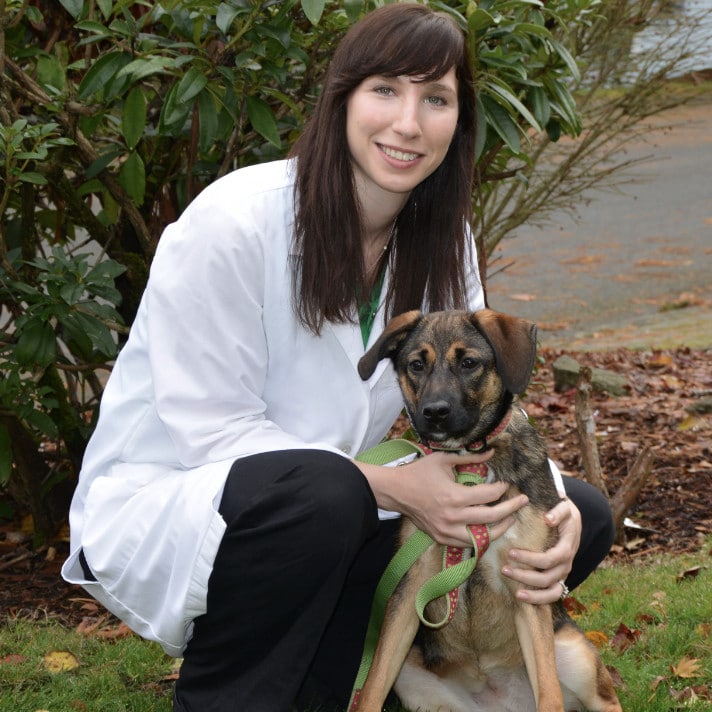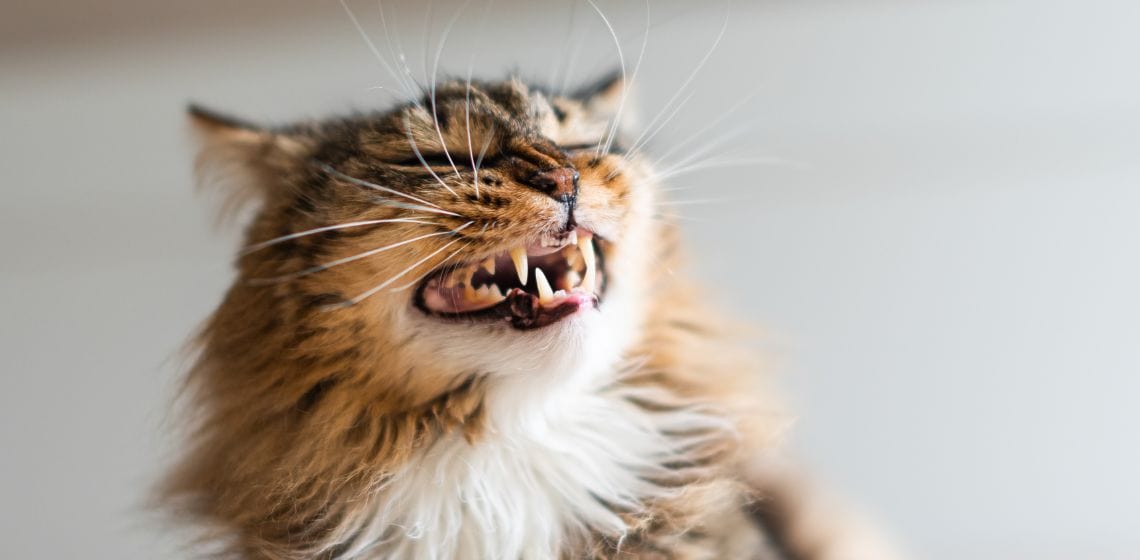Table of Contents
While there are multiple types of dental disease, it often starts innocuously as plaque buildup but can quickly escalate, leading to painful infections, tooth loss, and even systemic complications if left untreated. Dental cleanings under anesthesia are essential; however, there are also things that pet parents can do at home to help keep their cat’s teeth in good shape. Keep reading for tips to help your furry family member sport a healthy, gleaming smile.
Understanding Dental Disease in Cats
Periodontal disease is a common form of dental disease in cats. This progressive condition affects the structures supporting the teeth, including the gums, bone, and ligaments. It is caused when bacteria form a film (plaque) on the teeth. Within days, this mineralizes and hardens into tartar or calculus, leading to the progressions below:
- Gingivitis: The earliest stage, where the gums become red, swollen, and may bleed easily. This stage is reversible with appropriate care.
- Early Periodontitis: Gums may start to recede slightly at this stage. There’s minor bone loss, but it might not be easily visible. The inflammation goes deeper than just the gums.
- Moderate Periodontitis: The bone loss becomes more evident, leading to gum pockets or spaces developing between the tooth and gums. This can make teeth loose and lead to bad breath.
- Advanced Periodontitis: At this critical stage, there’s significant bone loss (over 50%). The pockets deepen further, and infections are frequent. This stage often results in tooth loss and can have systemic implications, affecting the cat’s heart and other organs.
Recognizing the early signs and seeking early intervention can halt or even reverse the disease’s progression, ensuring the health and longevity of your pet’s teeth.
Feline Odontoclastic Resorptive Lesions (FORLs) represent another challenge specific to feline oral health. These painful lesions occur when the tooth’s structure gets eroded, exposing the sensitive inner part of the tooth. Cats with FORLs often exhibit mouth pain and discomfort while eating. Unfortunately, there is no way to prevent FORLs from developing, but vet check-ups can help detect them
. Treatment involves extraction of the affected tooth.Dental Care Tips From a Vet
Brush your cat’s teeth daily
Brushing your cat’s teeth can be challenging, but it’s the cornerstone of good dental health. By removing plaque daily, you can prevent tartar buildup, which is a significant contributor to periodontal disease. Use a cat-specific toothpaste such as C.E.T. Enzymatic Toothpaste. You will also need an appropriately sized toothbrush or piece of gauze to wrap around your finger. Aim to brush the outer surface of your pet’s teeth in gentle circles, focusing on the gum line.
Use dental products approved by the Veterinary Oral Health Council
While nothing compares to brushing, it can be extremely difficult in some cats. Dental chews and treats are not only a yummy source of entertainment for your cat but also a handy tool for scraping away soft plaque. When your cat chews, the texture can help clean the teeth, much like a toothbrush. Water additives, sprays, and gels can provide an additional layer of protection against bacteria and can be especially beneficial for felines.
There are numerous dental products available, but if you want to find the ones that are proven to actually be effective, it is key to look for an endorsement by the Veterinary Oral Health Council. Additionally, it’s important to note that while these products may be beneficial, they should be used in conjunction with brushing and not as a replacement.
Consider a prescription dental diet
Dental diets are specially formulated cat foods crafted to tackle and prevent common dental challenges, such as the accumulation of plaque and tartar. Unlike typical dry food, the kibble in dental diets is designed with a specific texture and increased size. This design ensures that as a cat bites into the kibble, it scrapes against the teeth, assisting in plaque removal.
Beyond mere physical design, the ingredients also play a pivotal role. These diets often incorporate special additives or enzymes aimed at breaking down oral bacteria or modifying the saliva to make it less conducive for bacterial growth. Importantly, while promoting oral health is the primary objective, dental diets are complete and balanced and won’t neglect overall nutrition.
Recognize when to consult a veterinarian
Even with daily bruising, regular dental check-ups are vital. This involves a dental cleaning, exam, and x-rays under anesthesia. If any teeth are determined to be damaged or diseased, your vet may recommend removing them.
The frequency that your cat will need professional dental cleanings will depend on various factors, such as your their age, predisposition to developing dental disease, and overall health. However, if you notice bad breath, drooling, difficulty chewing, pain, or any swellings in the mouth or on the side of the face, it’s time to visit the vet. Early detection can make treatment more straightforward and prevent more serious complications.
Laying the Foundation: At-Home Dental Care for Cats
Starting an oral care routine for your cat might seem daunting. Cats are naturally independent creatures and can be resistant to changes in routine. Here are some steps to ensure a smoother transition and help set up a life-long routine to keep your cat’s teeth clean and healthy.
- Start Early: If possible, introduce dental care routines when your cat is a kitten. This normalizes the process early on.
- Be Gradual and keep sessions short: Initially, let your cat get used to having their face and mouth touched. Progress to using a piece of gauze wrapped around your finger or a cat-specific toothbrush slowly.
- Use Cat-Friendly Products: Always use toothpaste formulated for cats. Human toothpaste contains ingredients that can be toxic to felines.
- Positive Reinforcement: Reward your cat after each session, reinforcing the idea that dental care can be a positive experience.
- Consistency: The more you integrate dental care into your cat’s daily routine, the more accustomed they will become. Try to always brush their teeth at a certain time of day and in a specific location.

Liza is a veterinarian who graduated from MSU CVM in 2013 and spent five years working in small animal practice. She loved working with dogs and cats and educating owners on all aspects of veterinary medicine, especially animal behavior and dermatology. She has since transitioned to remote work to be able to spend more time at home with her husband, two young kids, and two cats. She is thrilled to be able to combine her passions for veterinary medicine and writing. She is licensed as a veterinarian in Washington State.








